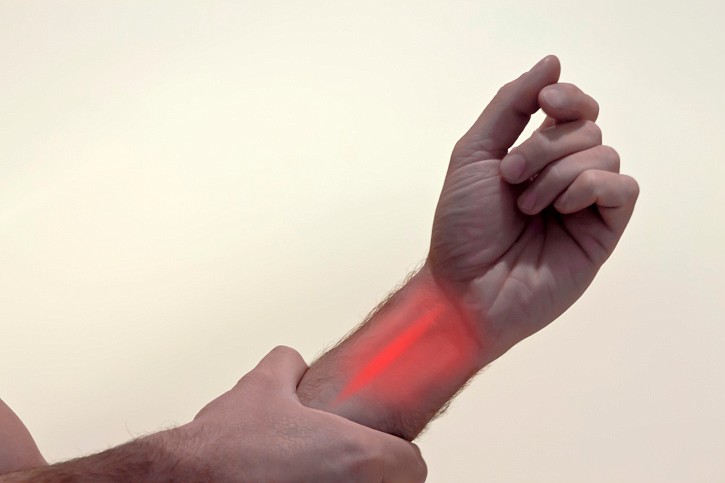Are Your Wrists at Risk? Learn About Carpal Tunnel Syndrome
October 8, 2014 at 12:00 p.m.
You’re working at your desk, but you’re distracted by a tingling or numbness in your hand and wrist. Then a sharp, piercing pain shoots from your palm through your arm. If you’ve had symptoms like these for several days—or worse, weeks—or if they keep you up at night, you may have carpal tunnel syndrome.
Carpal tunnel syndrome is caused by a nerve getting pinched inside a narrow passageway—called the carpal tunnel—in your wrist. The rigid tunnel is made of bones and ligament. It surrounds several tendons and an important nerve, called the median nerve, that detects feelings in your thumb and fingers (except for the little finger). The median nerve also helps to control certain hand movements.
Several factors can increase pressure inside the carpal tunnel and squeeze the median nerve. A wrist injury can cause tendons to swell and press against the nerve. Arthritis, diabetes, thyroid disease, pregnancy and menopause can also contribute to swelling and pain. Some people are more likely to get carpal tunnel syndrome simply because they were born with smaller carpal tunnels. Sometimes the cause is unknown.
People who work on assembly lines, such as meat packers, seamstresses and cleaners, seem more likely to get carpal tunnel syndrome. But although people often blame repetitive hand or wrist movements for the disorder, there’s little solid evidence that they’re the root cause. They may simply make symptoms worse.
If you suspect you have carpal tunnel syndrome, see your doctor as soon as possible. Early treatment is important to avoid permanent damage to the median nerve. Doctors sometimes use simple tests—like tapping on the wrist—to see if it brings on symptoms that indicate carpal tunnel syndrome. These tests can rule out other causes of wrist pain, like tendonitis and other disorders caused by repeated hand and wrist motions. Sometimes doctors use small electric shocks to test how well the median nerve is working. Or they may use ultrasound imaging to detect impaired movement of the median nerve. Routine laboratory tests and X-rays can find underlying causes, like diabetes or bone fractures.
Treatments for carpal tunnel syndrome should begin as soon as possible. Your doctor will treat underlying causes like diabetes or arthritis first. You may be advised to use splints or a hand brace to keep your wrist from twisting or bending. Nonprescription pain relievers may help to ease pain and swelling. Steroids, taken orally or injected into the wrist, can offer pain relief for up to 3 months. Once symptoms improve, stretching and strengthening exercises may help to prevent future trouble.
Severe cases, with symptoms lasting for 6 months or more, may require surgery. Surgery involves cutting the band of ligament that surrounds the carpal tunnel to reduce pressure. Symptoms often improve immediately after surgery, but full recovery may take months.
If you have carpal tunnel syndrome, be sure to talk with your doctor about your treatment options.





